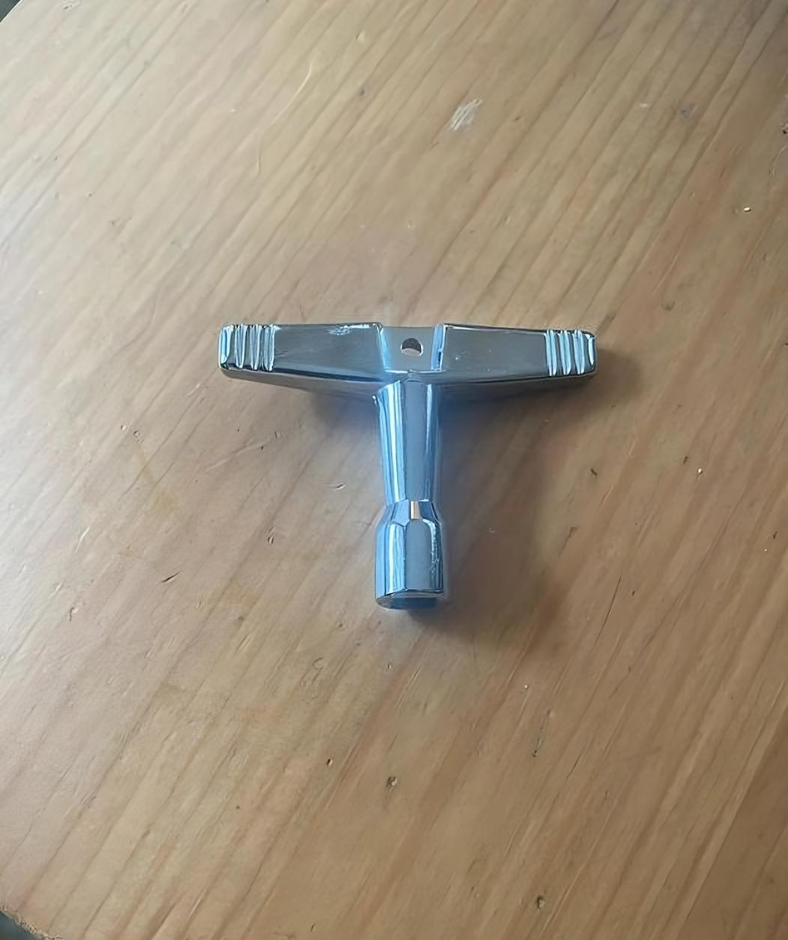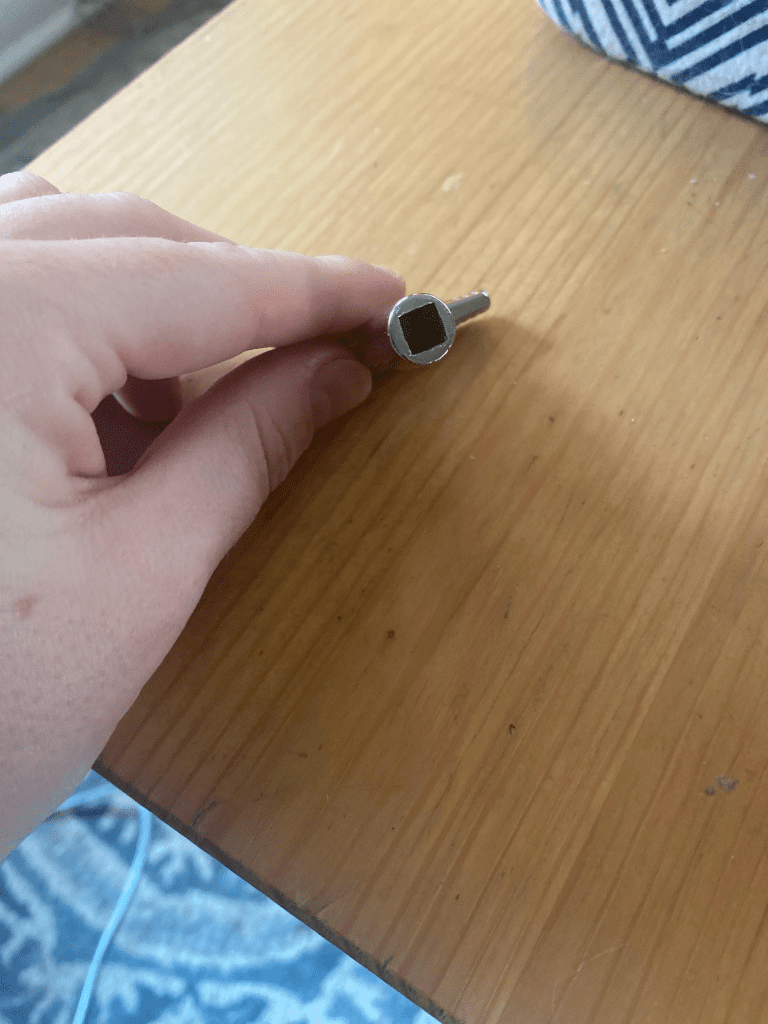A metal having a square opening in the bottom
The drum key—it’s compact, unassuming, and often overlooked, yet it’s a vital tool in every drummer’s kit. This small, T-shaped device is more than just a tuning tool; it represents centuries of musical evolution and technological progress. In this article, we’ll dive into the fascinating history of the drum key, explore its functions, and understand why this simple tool continues to shape the sounds of today’s music.
Origins in Antiquity: The Roots of the Drum Key

Drumming dates back thousands of years, with roots in ancient civilizations like Egypt, Mesopotamia, and China. In these cultures, drums held cultural and spiritual significance, used in rituals, ceremonies, and celebrations. But even back then, drummers faced the challenge of tuning their instruments to achieve the desired sound.
In these early societies, primitive tools and techniques were used to adjust drumheads. Animal hides were typically stretched over wooden frames, and drummers would tighten or loosen the material by hand or with basic tools. Though rudimentary, these early efforts laid the foundation for the drum key, creating a need for more precise control over sound.
Evolutionary Progress: The Birth of the Modern Drum Key
The drum key as we know it began to take shape during the 19th century. With advancements in metallurgy and the onset of industrialization, musicians started exploring new ways to improve and refine their instruments. Drums, too, saw innovations, particularly in the way they were tuned.
The modern drum key was born out of these developments. It evolved into a compact, T-shaped tool with a hexagonal socket designed to fit over tension rods, which fasten the drumheads to the shell. This design enabled drummers to easily tighten or loosen the drumhead, allowing for quick tuning adjustments. The drum key quickly became a staple in the kits of drummers everywhere, revolutionizing the way they approached their instrument.
Functional Versatility: What the Drum Key Can Do
You might think a drum key is only good for tuning, but its uses extend far beyond that. This versatile tool is a drummer’s best friend, allowing for a range of adjustments that impact everything from sound quality to durability.
1. Tuning Drumheads for Optimal Sound
The primary purpose of the drum key is tuning. Drumheads are attached to the drum shell using tension rods. By turning the drum key clockwise or counterclockwise, drummers adjust the tension on these rods. More tension results in a higher pitch, while less tension lowers it.
This simple mechanism allows drummers to customize their sound based on personal preference or musical style. A jazz drummer might opt for a higher pitch with a crisp tone, while a rock drummer may prefer a lower, punchier sound. With a drum key, these tonal changes are just a few twists away.
2. Replacing and Repairing Drumheads
Beyond tuning, drum keys are essential for removing and replacing drumheads. When a drumhead wears out or breaks, drummers can use the key to release the tension rods and lift off the head. This not only makes it easier to change drumheads but also allows drummers to perform quick repairs on the go. Having a drum key handy ensures you’re prepared for any situation, whether it’s a broken head during a live performance or a simple maintenance check.
3. Adjusting Drum Hardware

Most drum kits include additional hardware, such as snare drums, tom mounts, and kick pedals, all of which often require adjustments. A drum key can help with these adjustments, too. Many drum kit components feature bolts and screws compatible with a drum key, allowing drummers to make necessary changes to their setup quickly. It’s not uncommon to see drummers tweaking the height of a stand, the angle of a tom, or the position of a pedal using their drum key. This versatility makes it an essential tool for any drummer, whether you’re on stage, in the studio, or practicing at home.
Impact on Music: Shaping Sound Across Genres
The drum key’s impact on music is enormous. Without it, drummers would struggle to maintain their instruments’ sound quality and consistency. It’s an indispensable part of various musical genres, from the thunderous beats of marching bands to the intricate rhythms of jazz and the powerful, driving sounds of rock.
1. Jazz and Precision Tuning
In jazz, drummers often experiment with different tunings to create distinct tonal textures. The drum key allows jazz drummers to adjust their drumheads for a higher, more resonant tone that complements the genre’s delicate brushwork and improvisational style. Without the drum key, achieving the distinct sound required in jazz would be nearly impossible.
2. Rock and the Quest for Power
Rock drummers, on the other hand, seek a heavy, powerful sound that cuts through loud guitars and bass lines. With the drum key, they can adjust their drumheads to produce a punchy, low-pitched tone that’s essential for rock music. This tool lets them make quick adjustments on stage, ensuring they can maintain their signature sound throughout the performance.

3. Studio Engineering and Sonic Precision
In the studio, the drum key’s role becomes even more critical. Sound engineers often use it to fine-tune the drums, adjusting tension for the perfect balance of tone, sustain, and resonance. A well-tuned drum set can enhance clarity, add depth, and bring life to a recording, making the drum key an essential part of the music production process.
Continued Significance: The Drum Key Today
The drum key might be a small tool, but its role in music is anything but minor. It represents craftsmanship, precision, and the ongoing pursuit of perfect sound. Today, it’s as crucial as ever, with drummers across all genres relying on it to unlock the full potential of their instruments. Even as drum technology advances, the fundamental design of the drum key has remained largely unchanged—a testament to its effectiveness.
For seasoned drummers and beginners alike, the drum key is a symbol of the art and science of drumming. Its straightforward design belies its profound impact on music, underscoring its continued relevance in both live performances and studio settings.
Conclusion: The Drum Key’s Legacy in the World of Music
From its humble beginnings in ancient civilizations to its role in modern music, the drum key has evolved into an indispensable tool for drummers worldwide. This small device has shaped the sounds of countless musical genres, allowing drummers to achieve the perfect pitch, replace drumheads on the fly, and make quick adjustments to their setups. The drum key may seem simple, but it plays a powerful role in the world of percussion.


